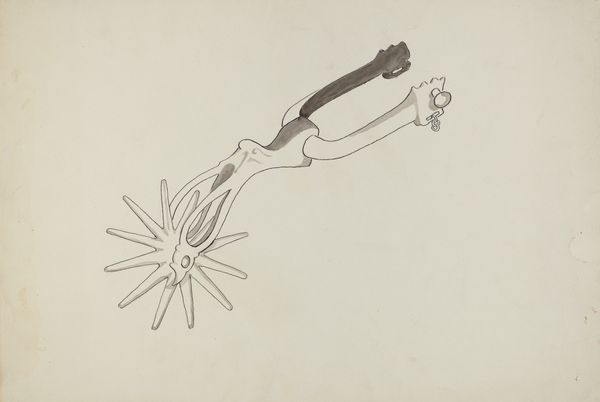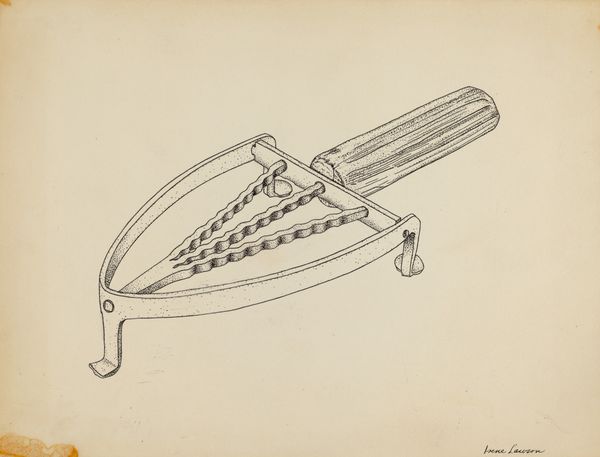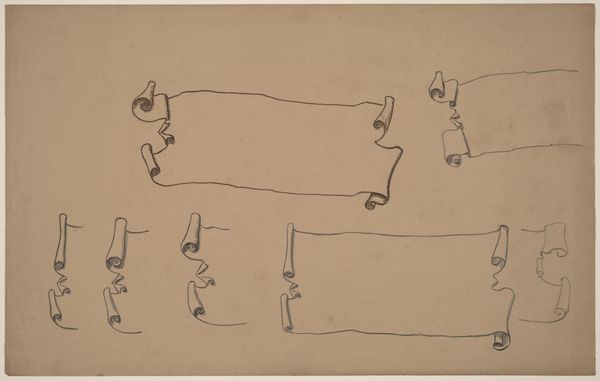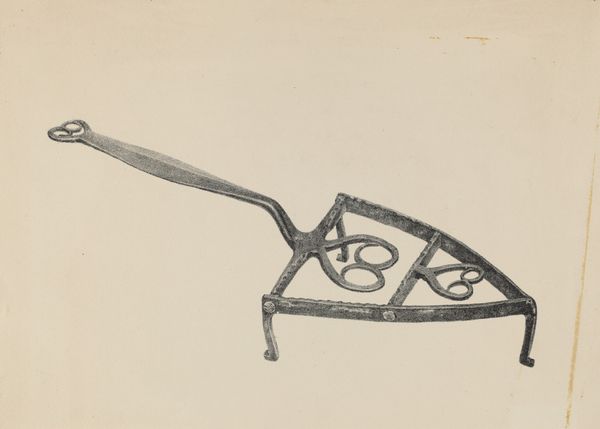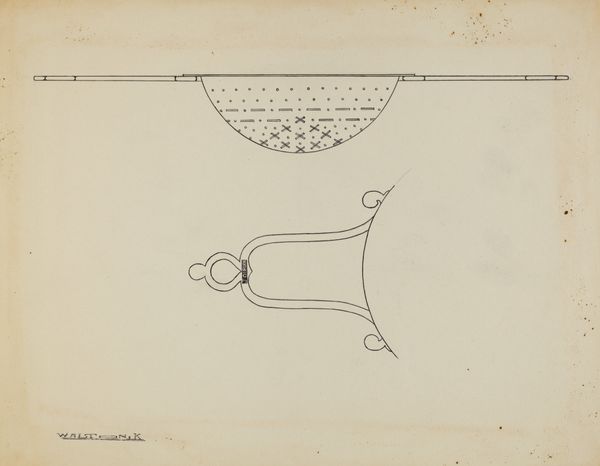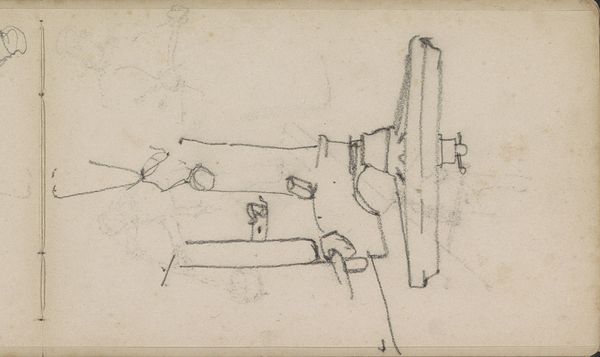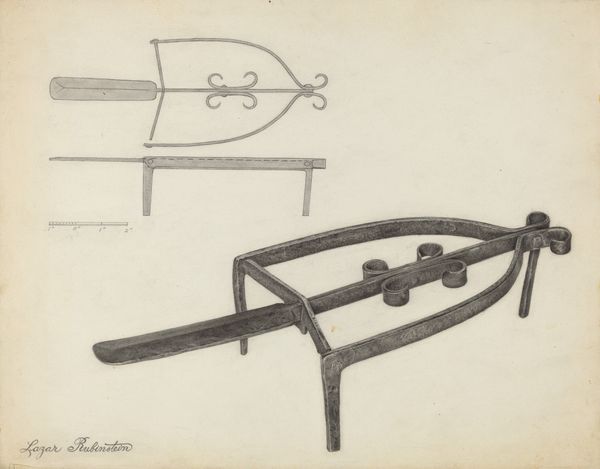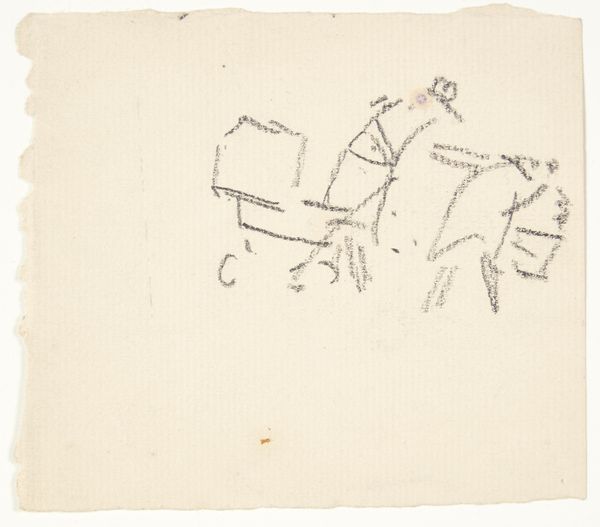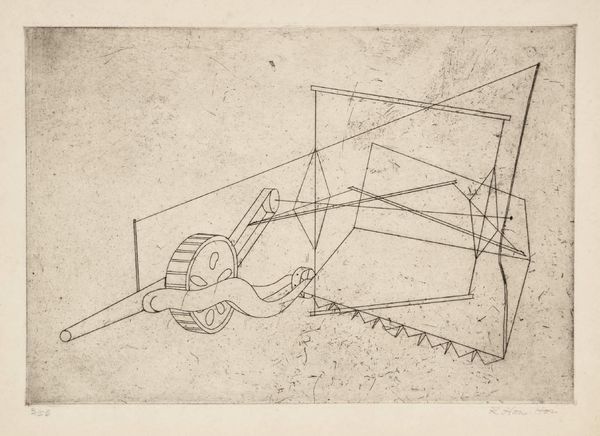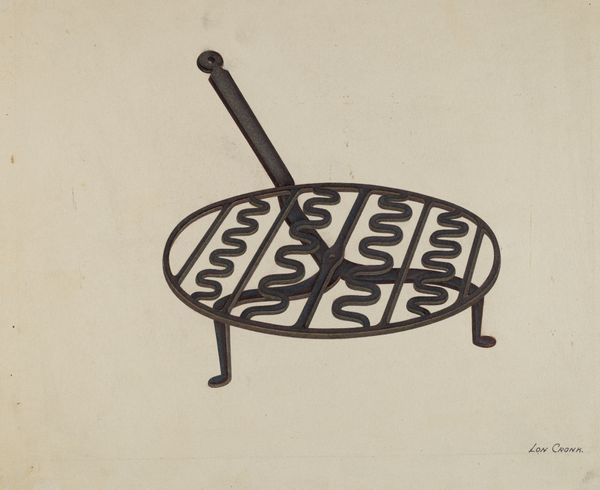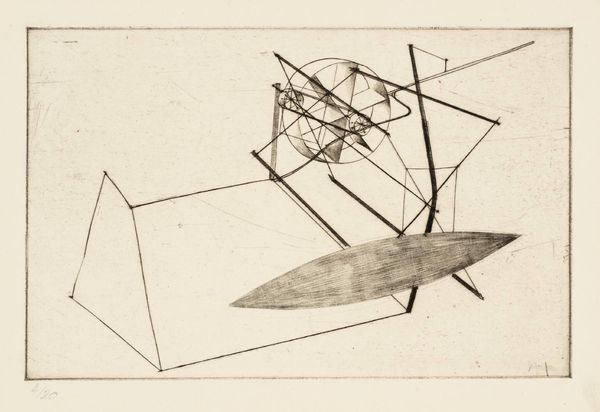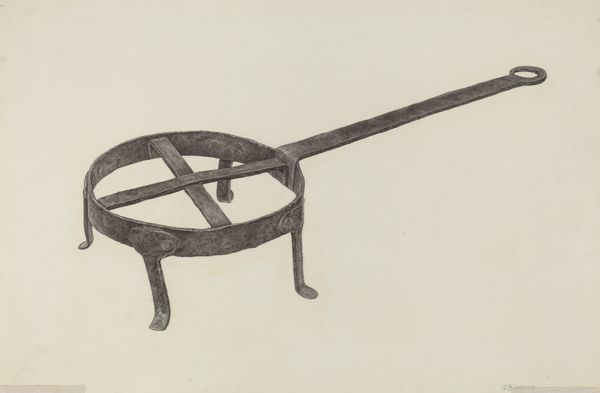
drawing, pencil
#
drawing
#
aged paper
#
toned paper
#
light pencil work
#
blue ink drawing
#
old engraving style
#
form
#
personal sketchbook
#
pencil
#
ink colored
#
sketchbook drawing
#
watercolour illustration
#
sketchbook art
Dimensions: overall: 22.8 x 28.4 cm (9 x 11 3/16 in.)
Copyright: National Gallery of Art: CC0 1.0
Curator: So, here we have "Trivet," a drawing by Holger Hansen, created around 1938. It’s rendered in pencil and ink, featuring an aged, toned paper that gives it a unique feel. Editor: It's interesting to see an artist focusing on something so functional, almost mundane. The subject contrasts with the quite delicate lines of the drawing style. What aspects of this work stand out to you the most? Curator: I’m struck by the convergence of design, labor, and everyday life represented here. Hansen, in meticulously drawing a trivet – a humble object meant to protect surfaces from hot dishes – elevates the ordinary through artistic means. It urges us to reflect upon the socio-economic context of its production and consumption. The material reality of its use and how such reality transcends boundaries between fine art and functional design, questioning traditional artistic hierarchies. Editor: That's a good point. It prompts us to consider the labor involved in producing something as simple as a trivet, and how that labor might be overlooked. Curator: Precisely! Consider also, the aesthetic choices in rendering the object: the blue ink, the aged paper. They give the drawing a timeless quality, suggesting the enduring relevance of handcrafted items amidst mass production. Do you think that was a conscious commentary by the artist? Editor: Possibly. By choosing these traditional mediums and an "old engraving style," maybe Hansen aimed to highlight the value and durability of handcrafted objects against the rise of industrial production. Curator: Right, and the three sketches can highlight its structure and function as well as the different kinds of material. We also learn more about its production thanks to these sketches. Editor: That’s a compelling perspective, seeing the drawing as a material commentary on the relationship between art, labor, and value in everyday life. I hadn't thought of it that way. Curator: Indeed, by examining the material reality, process, and cultural context embedded within it, we can uncover layers of meaning that challenge conventional notions of art and utility. It all merges to emphasize the human labor involved in shaping even the most mundane of objects.
Comments
No comments
Be the first to comment and join the conversation on the ultimate creative platform.
